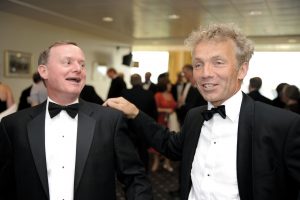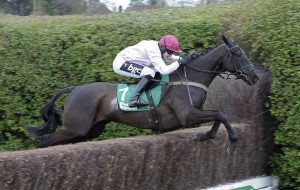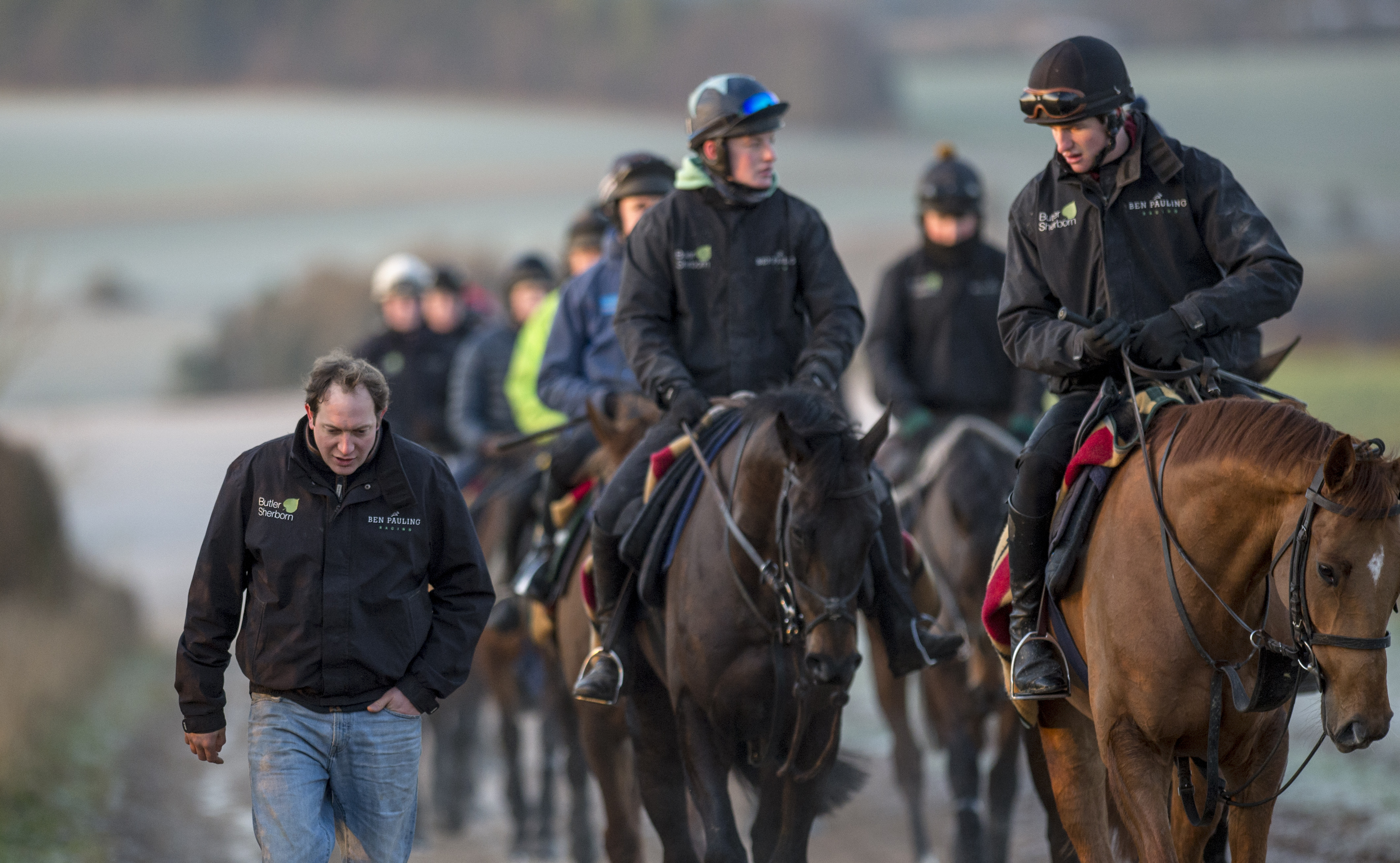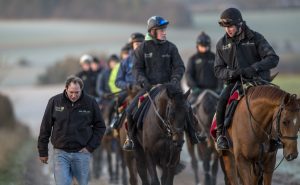You joined Timeform in 1974 as a 19-year-old and left the company in 2009 as Chairman. How did 35 years with the specialist rating and publishing company influence your outlook on racing?
Having arrived as a fan, who thought he was knowledgeable about racing, after a smattering of practical experience as a stable lad at Bill Marshall’s Whitsbury stables in 1971, I quickly realised I knew nothing of real worth.
My experiences at Timeform, fulfilling various roles, helped me gain a much broader and hopefully valuable understanding of our sport.
As a member of the Channel 4 team at the launch of its racing coverage 32 years ago, you must have seen many changes within the sport. In your view, which has been the most significant?
That’s a tough one. When I made my TV debut at the 1981 York May meeting when the programmes were still under ITV’s remit, there was no Maktoum family, no BHA, no all-weather racing, no Sunday racing, no ATR or RUK channels, no five-day entry system and international racing was nothing like it is today.
Fixture expansion has not helped owners. The time has come to try pruning instead
I’ll plump for the Maktoum family because their involvement in our sport eventually changed racing’s horizons on a global scale.
You enjoyed a fantastic rapport and working relationship with John Francome. Why did your ‘double act’ work so well – and was his retirement one of the main reasons why IMG’s programme lost viewers?
John has a personality that lights up a room and he was a natural for TV, so of course I think his decision not to join IMG’s production was a loss. He is one of those blokes that women fancy and guys like.
For all his style being essentially fun, irreverent and relaxed, he had a gift for communicating to the layman some of the finer points of horses and riding. Given his sunny personality, it’s very easy to underestimate how insightful he is.
As his co-commentator, I tried not to tread on his toes, and vice-versa. If the subject matter concerned horses in the practical sense, it was John’s territory. My principal contribution was to know the form and the rules. As John used to say there’s no point both of us looking up the latter! We became good friends and still are.
It was inevitable that over the years TV viewing figures would decline as a result of the introduction of the many viewing outlets that have become available outside of terrestrial TV. Maybe I’m biased, but I don’t think racing realised how lucky it was to have regular terrestrial coverage virtually every Saturday as well as the Festivals.
Having started out on ITV, would you have liked to continue on racing’s current terrestrial partner? What did you make of the first show?
From the moment ITV didn’t take on Nick Luck or Simon Holt I realised they weren’t going to take someone with my background [too identified with Channel 4]. I had a great run with 35 and a half years of racing on terrestrial TV and only Sir Peter O’Sullevan has lasted longer.
I’m not in the slightest upset because producers make shows and are entitled to choose whom they please. However, I didn’t ask for an interview with ITV; Niall Sloane and his colleagues invited me to meet them.
I duly obliged, giving up a day to travel from Yorkshire for an appointment in London last April. At no stage since has Mr Sloane or any of his team been in touch to acknowledge my attendance or to inform me they wouldn’t be using me. Thankfully, my three bosses, John Fairley, Andrew Franklin and Graham Fry, were fair guys with far better manners.
I have made a point of not watching any of ITV’s output so far. The new team’s arrival has been done to death – written up and written off. I experienced the same when IMG took over Channel 4 and I am fed up with reading and hearing about it.
What will you miss most about not working on TV – and what will you do now with your spare time?
Spare time! What’s that? Seriously though, so far I haven’t actually missed the shows, or the travelling, but I do miss the people. Also, a bit like when I left Timeform, I miss the discipline of preparing for racing on TV.
Both Highflyer and IMG’s teams contained some outstanding professionals and, while good on-screen performers are important, slick, seamless live TV depends hugely on umpteen unsung heroes too.

McGrath’s ‘double act’ with John Francome was one of Channel 4 Racing’s big draws
Not withstanding the latest news on levy replacement, the debate over prize-money has dominated racing politics in recent times. What would be the best practical move that could be made to tackle the funding crisis facing British racing?
A proper overhaul of the fixture list, which is still littered with inadequately funded races, principally at the lower level.
A review was carried out in conjunction with Deloitte some seven years ago when racing found itself with three levy cuts in a year and the owners were but one group to overrule the BHA’s initial decision to cut out the 200 worst performing fixtures, even though a few of these were close to levy negative.
Instead minimum values disappeared and the fixture list actually grew. The ROA’s decision on this matter was one reason why I resigned after 20 years as a member.
There is too much racing for too little prize-money. Money is being wasted supporting weak condition events; even now on a few occasions races are being put on with a total prize-fund of £2,500. Put in charge with the power to enact change, I would not be cowed by bleating from the bookmakers, who claim more racing is better for racing.
For those who supply the core product, the owners, our lot has not improved during the dramatic fixture expansion over the last few years. The time has come to try pruning instead.
Is British racing too focused on betting and not sufficiently about racing as a sport?
To answer this properly I’d need to understand what those in charge of our sport, never mind the bookmakers, actually know about what a thoroughbred is. Nowadays, many decisions concerning races and fixtures appear to be made without that basic consideration in mind. Flat racing is dictated by a breeding programme, which evolved to produce horses at key times.
Our two-year-old, three-year-old and older horse programmes are linked by a weight-for-age process. People seem to forget that, in contrast to humans, the thoroughbred is a hugely precise species. It progresses physically throughout the season and, as such, dictates the best times for some of our programmes to take place. Leaving aside the arguments concerning bookmaking content on terrestrial TV, overall the major high street bookmakers market racing splendidly. After all, it’s in their interests to do so.
You were an Independent Member of the BHA but resigned in 2010 as you were opposed to the plans Racing For Change was going to implement. On reflection, was your resignation justified in view of subsequent events?
As a member of a board like the BHA one is pretty much duty bound to accept the majority decision on a certain subject. On most occasions I accept that. However, in particular, some plans for our two-year-old races as well as some dotty proposals for jumping, which mercifully ended in the shredder, incensed me. There was no way I could just sit on my hands and keep schtum.
Racing was assured that a mega fixture, Ascot’s Champions Day as the climax to a series, and Newmarket’s Future Champions Day would engage the 18-45-year-olds in the sport. Where are these people and if they exist why hasn’t racing heard about our newly acquired fans? From a racing perspective Ascot’s stand-alone fixture was a success this year with, in the main, strong representative fields.
In such a random sport you have to dream, otherwise you might as well not bother
The first year it took place the same could be said. The common denominator both times was a fair racing surface. On the other occasions soft ground ensured absentees and, inevitably, a few disappointing performances.
While thanks to QIPCO’s generous support, Ascot as a sole day’s racing in October has shown it can be a fine day’s sport. Though whether the concept for which it was introduced has worked is still open to debate. And don’t tell me the recent changes forced upon Future Champions Day – running the Middle Park and Dewhurst Stakes two weeks apart, instead of clashing on the same day – aren’t much for the better.
What stands out as your most exciting moment on television? And the hairiest?
I never particularly liked presenting, but circumstances dictated that I was the anchor for the first Dubai World Cup on Channel 4 in 1996. Those few days proved a tremendous experience, especially with a marquee horse like Cigar triumphing. The hairiest came in 2001 when the December Cheltenham meeting was abandoned at 10am and I was immediately despatched to Channel 4’s second site, Doncaster, where I was due to kick off at 1pm. I made it with five minutes to spare.
Andrew Franklin had not told me there were no ‘reverse’ facilities at Doncaster, meaning that I was working without graphics or VT, just a countdown in my ear and unable to see what was happening! The show went okay but when I reflect as to the reasons why, 12 years ago, I needed eight stents in my heart, days like that loom large in the memory.
You are well known for keeping a meticulous record of your bets and at times have even let TV viewers know which horse is carrying your cash. Can you let us in on a couple of particularly memorable punts – or one that got away?
There’s no point kidding yourself, the majority of us back more losers than winners. The only way you can keep a proper track of punting is by logging every bet. I still do this.
My biggest recent win in terms of odds/return was on Neptune Collonges in the 2012 Grand National. I couldn’t believe his price was 33-1 and actually doubled my bet. My biggest single recent loss by some way would have been St Nicholas Abbey in the 2010 2,000 Guineas.
There are more betting firms than ever, yet some punters find it nigh on impossible to get their bets accepted. Why is that and what should be done?
I understand odds and form, but I am not a betting ‘expert’ per se and rarely use exchanges. These days most big businesses are run by accountants. In general, to members of that profession, risk is something to avoid, not something to be taken. In a lot of cases, the personal elements between bookmaker and punter have disappeared.
You must have a favourite horse, trainer and jockey. Who are they, and why?
I got hooked on racing after watching the 1963 Grand National to the extent I could hardly wait for the next renewal and, two years later during the build up, I became aware of that fine hunter-chaser Freddie and started to follow him. He was the first horse to make a real impression on me.
As for jockeys, in my early days at Timeform I got to know Jonjo O’Neill when he began doing some promotional work for us. So I always followed his career and, after he began training, had several horses with him. He and his wife Jacqui are outstanding people.
As an owner and breeder you have met with considerable success over the years with such as Toogood To Be True, Castles In The Air, Sir Reginald and Decorated Hero (one of Frankie Dettori’s ‘Magnificent Seven’ at Ascot in 1996). To what extent are you still an owner and breeder?
They were all smart horses, though of that quartet only Decorated Hero was owner-bred, in partnership with the late Reg Griffin. All told, I’ve bred some 80 winners on the Flat and over jumps. This current year is the first time I haven’t had a horse in training. Don’t worry though, I’m still shredding money courtesy of my broodmare Annina, who has a yearling by Footstepsinthesand and is due to Camelot before the end of January.

The McGrath silks have been carried by some good horses including Fresh Air And Fun
The BHA has introduced the Northern Lights Series to boost jump racing in the north. Is this a step in the right direction?
It’s really hard to pinpoint because so far as the Flat goes, the opposite applies. But since I started working in racing, from a perspective of quality, I’ve never known jumps racing in the north struggle for support in the way that currently appears to be the case.
JCR plans to close Kempton Park, invest millions in Sandown and build a new all-weather track at Newmarket. Discuss…
Since the flat course was redeveloped in 2005 as an all-weather circuit, Kempton has struggled for customers on a regular basis.
According to Levy Board figures, total daily attendances in 2016 varied from 317 for a February all-weather to 21,164 who watched Thistlecrack win the King George. Kempton is an excellent jumping facility, providing a vastly different test to those undertaken at Cheltenham and Sandown. It drains well and stands up to the vagaries of the weather better than most courses.
It’s hard to see from statements issued so far why the Jockey Club feels it’s time to say goodbye. We are told by the authorities: “Kempton is a highly profitable racecourse”. So why does it have to go?
The Kempton proposal is part of a pledge by the Jockey Club to put £500m into racing over the next decade, the sale of the Sunbury site reportedly yielding £100m towards this. The precise detail as to how this huge windfall unfolds has been merely touched on in accompanying statements, including improving the ground at Sandown, where the King George will be re-homed, and farming out Kempton’s jumps programme to other Jockey Club-owned tracks with improved prize-money.
As for a new all-weather track at Newmarket, surely it would have an adverse effect on nearby Chelmsford, where fields sizes aren’t great anyway. We are entitled to know much more on the whole highly controversial subject – who, what, why, where and when will do for starters.
What ambition would Mr Jim McGrath – your name on twitter – like to fulfil next?
To stay happy and healthy for at least the next ten years – and to own and breed a top horse. In such a random sport you have to dream, otherwise you might as well not bother.



